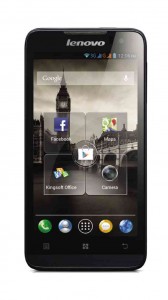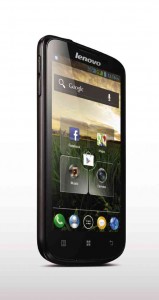New player Lenovo Mobile eyes big chunk of smartphone market in PH
MANILA, Philippines—The Philippine smartphone market posted the highest growth in Southeast Asia in the first quarter of the year, at 402 percent, and it is seen to continue expanding in the coming years.
However, smartphones still account for only 30 percent of total mobile handset purchases in the country during the period, according to research firm GfK Asia. To industry players, this means only one thing—there remains a wide room for expansion.
Article continues after this advertisementThis exactly is the opportunity that Lenovo Mobile, a newcomer in the smartphone space, is counting on when it came into the picture sometime last year.
Brand counts
Banking on the fast-growing market and its reputation as one of the world’s most reliable brands in laptops and personal computers, Lenovo is not a bit worried about coming late into the game even as major smartphone players are already well entrenched in the market.
Article continues after this advertisement“That’s the good thing about technology, it evolves and there’s always opportunity for new players,” says John Rojo, business unit head of Open Communications, the exclusive distributor of Lenovo Mobile.
During its first six months in the Philippines, Lenovo Mobile managed to carve a 3-percent share of the market. Rojo says the goal is to grow its market share to a double-digit figure this year, eventually becoming a strong third or fourth in the market.
“We believe Lenovo Mobile is perfectly situated to take advantage of the explosive growth in the smartphone business because we offer best-in-value devices to our target consumers. Our focus is on the greater majority of consumers who also desire and deserve a smartphone device that is both affordable and reliable in order to assist them in running their daily business.”
Rojo admits it may be too ambitious to target the first two slots that are currently held by Samsung and Nokia. However, he says, the next two slots are wide open for the taking.
“There is no clear third or fourth today, and that’s what we are targeting now.”
Strategies
Lenovo Mobile, according to Rojo, intends to achieve its goal through the introduction of new devices, expanding its retail network and enhancing brand awareness.
When it came into the market last year, Lenovo introduced its entry level Android phone that sells for less than P5,000 and a few others. The products earned for it a 3-percent share of the market last year.
This year, Lenovo Mobile turned more aggressive. In the first quarter alone, it introduced five new models, each targeting a specific segment of the market: The IdealPhone S720 is for the multimedia workhorse who constantly use their smartphones to view, edit and share multimedia content; the S890, which was optimized for the entertainment of the “digital native” generation; the IdealPhone P770 for business people who demand more talk time, security, reliability and more handset options; the A800, an all-around entry level smartphone that strikes a balance between performance and price; and the IdealPhone 690, another entry-level smartphone that is the first in its class to break the 1GHz barrier.
The prices of Lenovo phones range from P4,999 to about P20,000.
In the second quarter, three more models were added to the list. Lenovo’s flagship model, the IdealPhone K900, first introduced at the Consumer Electronics Show in Las Vegas last January, and two other models were launched on Thursday.
The flagship model is a super-slim premium smartphone that runs on an Intel Atom processor and features a 5.5-inch screen, a 1080×1920 resolution, 2 GB of RAM, a 13-megapixel Sony Exmor BSI camera at the back and a 2-megapixel shooter at the front. Its all-metal design makes it look classy and solid.
The two other phones launched Thursday were the A390 and A706.
Brand ambassador
To further drum up the Philippine market’s interest in Lenovo phones, the company will soon bring its brand ambassador to the country—NBA superstar Kobe Bryant.
Rojo refuses to discuss the details of Bryant’s visit to the Philippines, but he says the execution of the Bryant-centered campaign will be localized and distinct to the Philippines.
And when the market starts demanding for more Lenovo phones, Rojo says, the company will be ready to serve. Lenovo Mobile, through Open Communications, has been expanding its retail network.
At present, Lenovo phones are available through a partnership with Smart Communications, which bundles the handsets in its subscription plans, and are also sold by independent retail outlets.
Focusing on its retail network, Lenovo Mobile is planning to put up retail kiosks and is considering establishing its own concept stores.
“About 70 percent of phone sales are done in the open market, and only 30 percent through operators. Thus, we have to strengthen our presence in the open market,” he says, adding that a special push is underway for the Visayas and Mindanao markets.
Target markets
Lenovo Mobile is targeting the mid-price range market, or the people who wouldn’t mind paying a little bit more for quality products.
“We can’t compete in the very low price range market which is dominated by local makers. We are focusing on those who appreciate the value of their phones and understand that they can get very good features at reasonable prices,” Rojo says.
Lenovo, he says, appeals to the young, those in the 18- to 30-year-old bracket. It is also counting on that segment of the market that is migrating from feature phones to Android phones, and existing smartphone users who are shifting to better alternatives at prices easy on the pocket.



